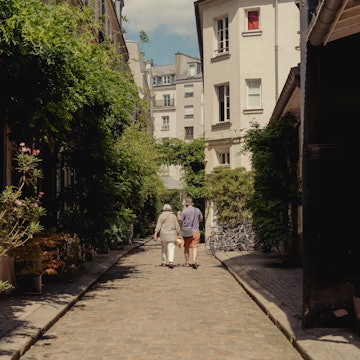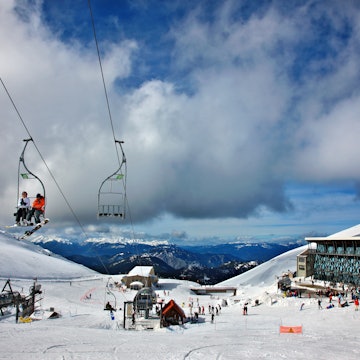
The 15 best things to do in Verona, Italy


A sweeping view over the rooftops of Verona. imagoDens/Getty Images
Shakespeare had no idea what he'd started when he set his (heavily derivative) tale of star-crossed lovers in Verona, but the city has seized the commercial possibilities with both hands. Everything from osterie (casual taverns) and hotels to embroidered kitchen aprons get the "Romeo & Juliet" branding.
While the play's depiction of feuding families has genuine provenance, the lead characters themselves are fictional. Undaunted, in the 1930s, the authorities settled on a house in Via Cappello (think Capulet) as Juliet's residence and added a 14th-century-style balcony and a bronze statue of our heroine. Today, you can squeeze onto the balcony itself at Casa di Giulietta, or – more sensibly – view this touristy sight from the square below. However, there is so much more to Verona than Romeo and Juliet.
Most of Verona's main sights are easily reached on foot, including those on the far side of the river, such as Giardino Giusti and Castel San Pietro, but local public transport is also easy to navigate. And as Verona is only a 75-minute train ride from Venice, it’s easy to pair it with a trip to Italy's famous floating city.
Here are the best things to see and do in and around the charming Italian city of Verona.
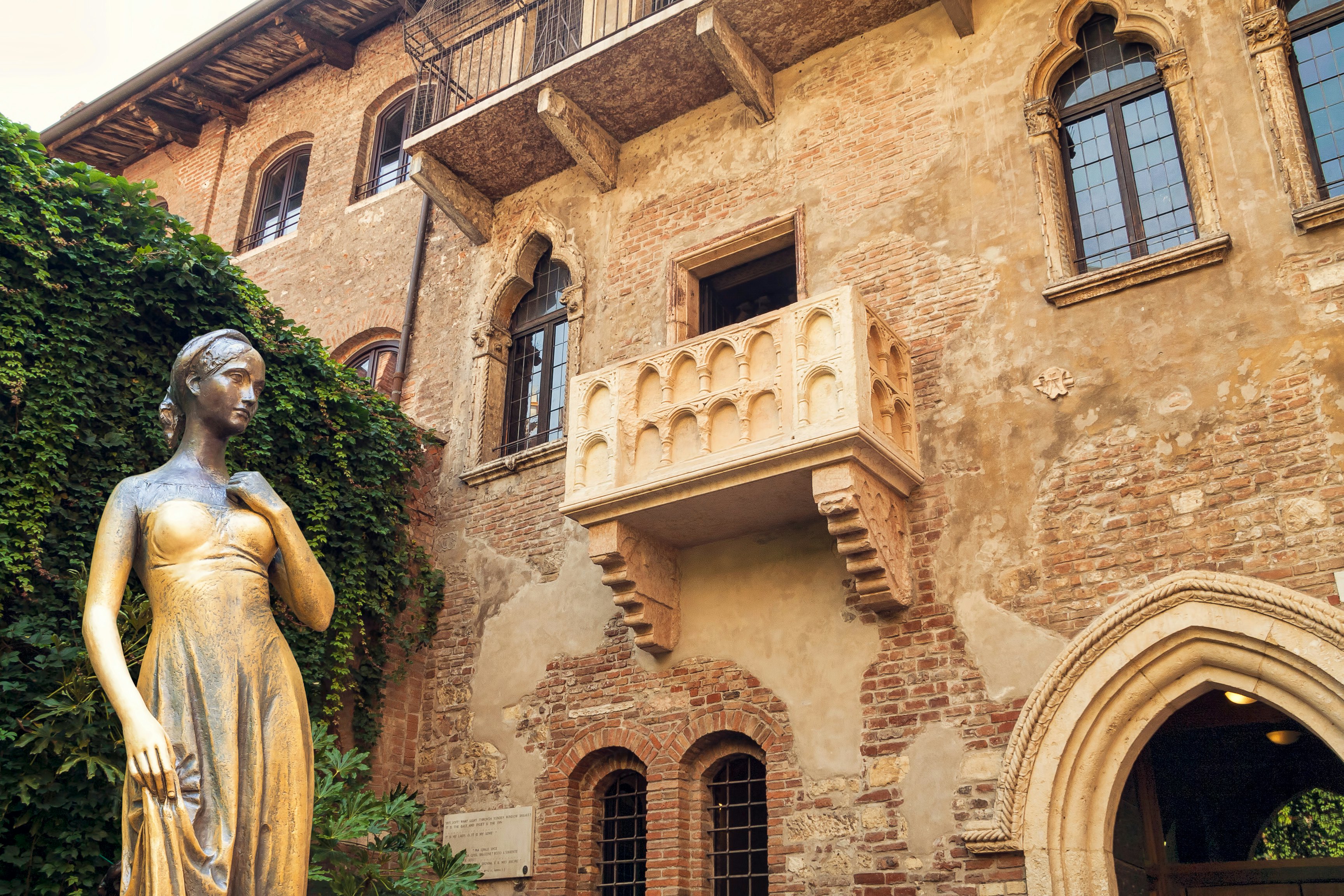
1. Visit Casa di Giulietta (Juliet’s House) – it has to be done
While there's no evidence that Shakespeare ever visited Verona, or that his young lovers Romeo and Juliet ever resided here, the Bard's famous tale has created an enduring cult of romance around the city.
Casa di Giulietta, Juliet's House, is a spectacle, but not for the reasons you might imagine. Entering the courtyard off Via Cappello, you'll be greeted by a young, multinational crowd, milling around in this tiny space taking selfies with the well-rubbed bronze statue of Juliet. Above you is the "famous balcony" – actually a modern addition – thronged by tourists queuing to have their picture taken against this “romantic" backdrop.
The actual house is not really worth the entrance fee – it's virtually empty and swamped with visitors. There are a couple of interesting exhibits inside, including the bed that featured in Zeffirelli's 1968 film version of Romeo and Juliet, and a few Renaissance costumes. The gift shop opposite reaches the height of heart-shaped kitsch.
Detour: If you want to know where Verona’s teen lovers really go, climb up to the hilltop terraces of Castel San Pietro for spectacular views.
2. Walk in the footsteps of Romans in the Arena
Built of pink-tinged marble in the 1st century CE, Verona's Roman Arena dominates the city's Piazza Brà and elicits audible gasps when first glimpsed. It's one of Italy's most astounding buildings and one of the world's best-preserved ancient structures. The Arena survived a 12th-century earthquake before being returned to use as the city’s legendary open-air opera house, with seating for 30,000 people.
It’s the eighth-biggest amphitheater in the Roman Empire and predates the Colosseum in Rome, but its incredible interior is hidden from the outside. Pass through the dingy ancient corridors, wide enough to drive a gladiator's chariot through, to re-emerge into the massive stone arena, with at least 50 levels of seating rising from the mammoth, oval showground. Head to the top for the best views.
Planning tip: Book tickets online to avoid long queues. Also note that the amphitheater is open to the elements, so this is not a great place to visit in the rain.

3. Be spellbound by an opera at the Arena di Verona
While it’s possible to visit Verona's Arena year-round, the best time to visit is in summer during the Arena di Verona Opera Festival. Around 14,000 music lovers pack the Arena on summer nights from June to September for the world's biggest open-air lyrical music event, which draws international stars.
The performances usually start at 9pm. There's no need to spring for top-end tickets – the numbered stone steps are fine. Rent a cushion and prepare for an unforgettable evening; shows performed here include Verdi's Aida, Nabucco, La Traviata and Puccini's Turandot, among others.
Planning tip: If you want to eat well before the show, hotshot chefs bring Italian traditions into the modern era at Locanda 4 Cuochi, located steps from the Arena. But reserve well ahead of your trip.
4. Shop international luxury and local artisans in Verona
Verona's main shopping thoroughfare, Via Mazzini, is lined with well-recognized international brands as well as local Italian labels. If you love shopping, this pedestrianized route and the streets running off it will keep you busy for hours. Next, head down Corso Porta Borsari, where you’ll find more local boutiques selling clothes, leather and handmade jewelry.
If you’re looking for unique places to pick up gifts or souvenirs from your Verona visit, you’ll find more quirky boutiques scattered in streets beyond the center. Via Rosa is a good spot for design-led gift stores. History (and book lovers) won’t want to miss Libreria Antiquaria Perini, a treasure trove of vintage posters, maps, prints, engravings and books.
For foodie treats, like olive oil, balsamic vinegar and limoncello to take home, try Salumeria Albertini on Corso Sant'Anastasia. Fine leather goods can be purchased at Cordovano. Your nose will direct you to the much-loved Merchant of Venice perfumery, while artisanal ceramics to cherish can be found at Migu Pottery.
Planning tip: If flea markets are your thing, time your visit for the first Sunday of the month to catch the Antiques & Vintage Market in San Zeno District.
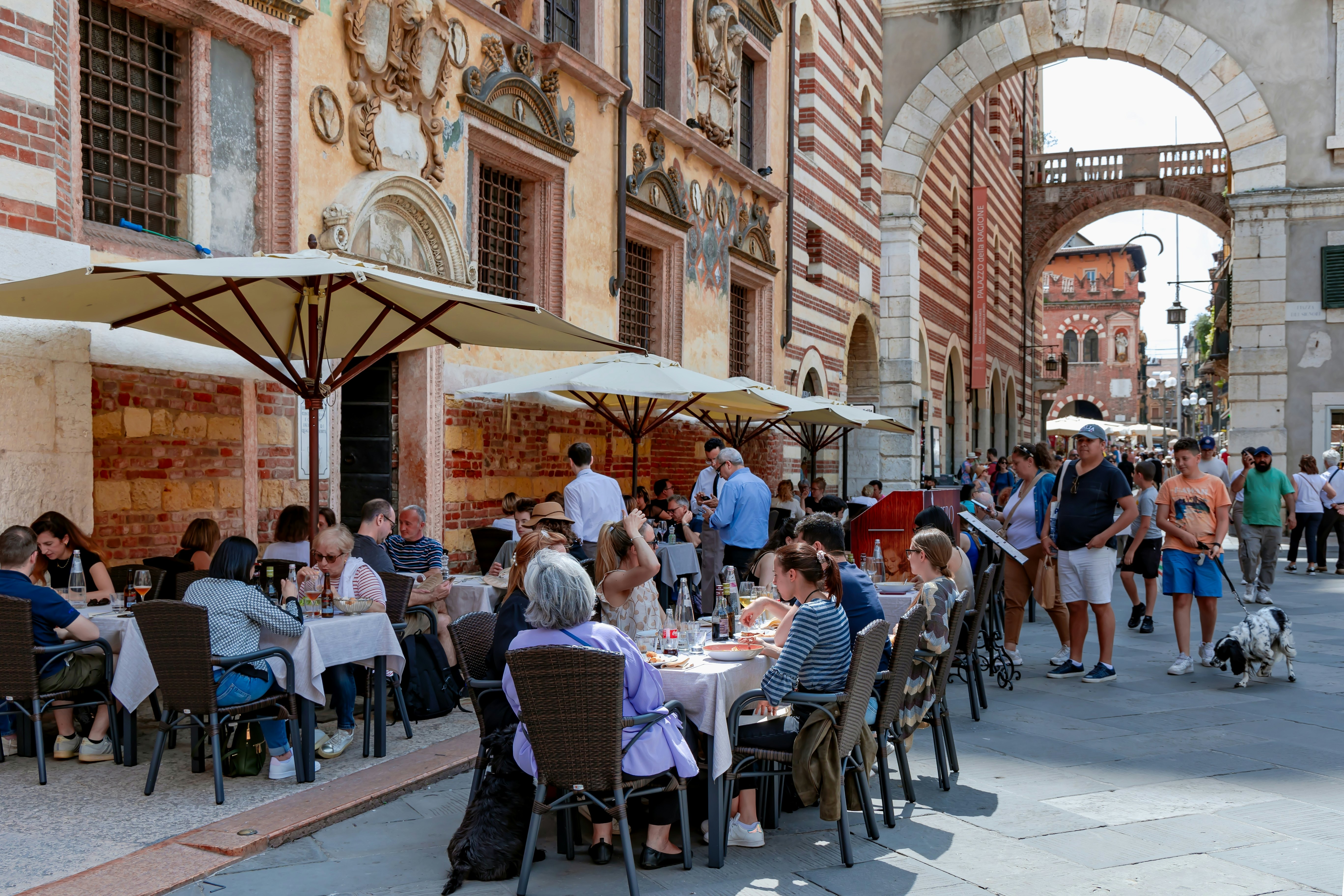
5. Admire the historic architecture on the Piazza dei Signori
Verona's beautiful open square, Piazza dei Signori, is ringed by a series of elegant Renaissance palazzi (grand residences). Chief among these are the Palazzo degli Scaligeri (aka Palazzo Podestà), the brick and tufa stone Palazzo della Ragione, and the 14th-century residence of Cangrande I Della Scala. The arched Loggia del Consiglio was built in the 15th century as the city council chambers. In the middle of the piazza is a famous statue of Dante, who was given refuge in Verona after he was exiled from Florence in 1302.
Most of the piazza's buildings are off limits to the public, but you can visit the 12th-century Palazzo della Ragione, on your left as you enter from the Arco della Costa, which houses a modern art gallery. Next door, the Palazzo del Capitano is fronted by a cobbled square with two huge round windows in the ground, which reveal the excavated Roman and medieval basements beneath. To the northeast loom the Arche Scaligere, the ornate, Gothic funerary monuments of the Della Scala family.
6. See fine art at Galleria d'Arte Moderna Achille Forti
In the shadow of the Torre dei Lamberti, the Romanesque Palazzo della Ragione is home to Verona's jewel-box Gallery of Modern Art. Reached via the Gothic-style Scala della Ragione (Stairs of Reason), the collection of paintings and sculptures spans the period from 1840 to 1940 and includes work from influential Italian artists such as Giorgio Morandi and Umberto Boccioni.
Among the many highlights are Francesco Hayez' arresting portrait Meditazione (Meditation), Angelo Dall'Oca's haunting Foglie cadenti (Falling Leaves) and Ettore Berladini's darkly humorous I vecchi (Old Men).
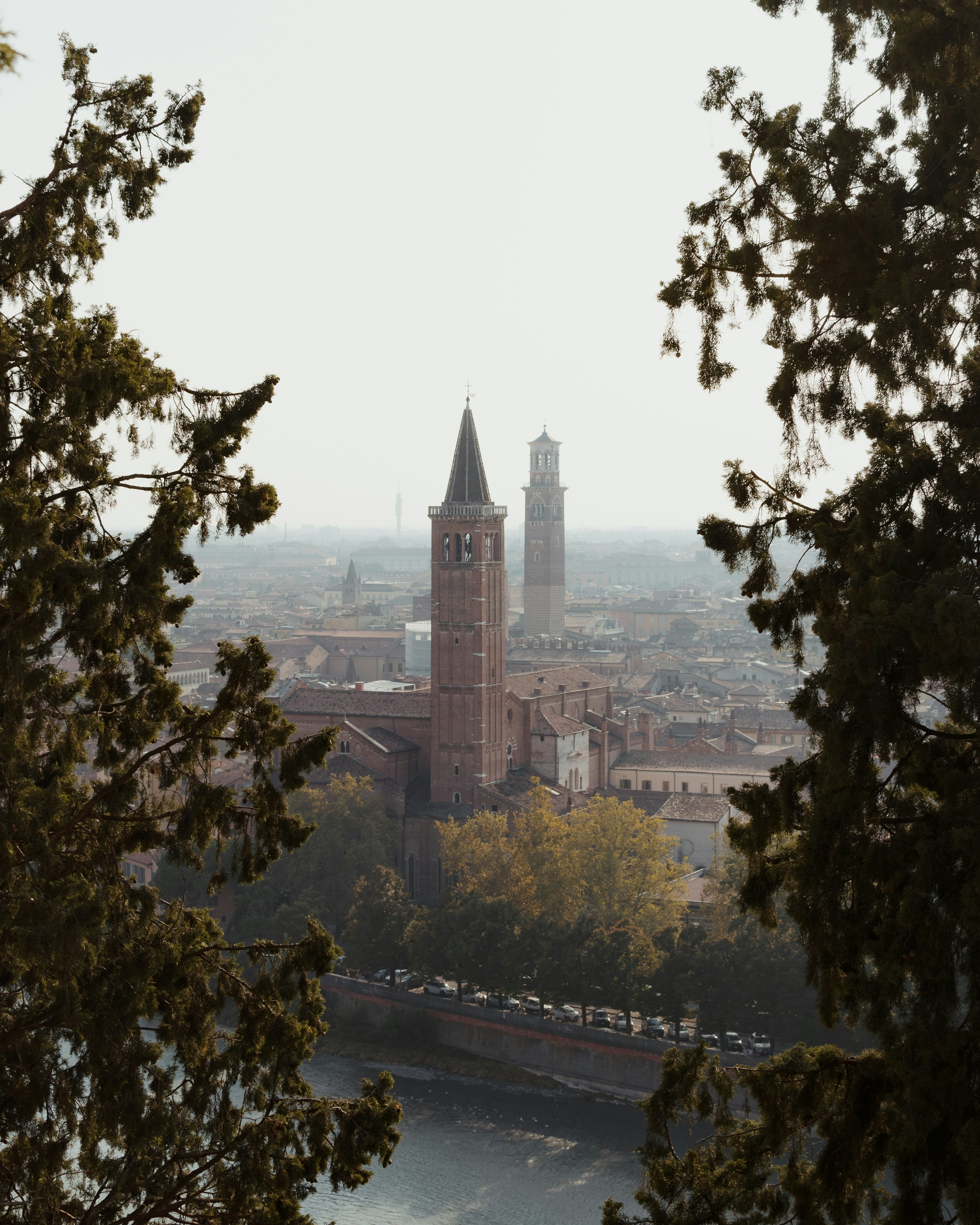
7. Take in the views from Torre dei Lamberti
One of Verona's most popular attractions, this 84m-high (275ft) watchtower provides panoramic views of Verona and the nearby mountains. Construction started in the 12th century and finished in 1463 – by which time, Verona had been invaded by the Venetians. It sports an octagonal bell tower whose two bells retain their ancient names – the Rengo bell once called meetings of the city council, while Marangona warned citizens of fire.
Planning tip: A lift whisks you two-thirds of the way up the tower but you have to walk the last few stories. If you have limited mobility, you may prefer to view the tower from below.
8. Photograph the city from Ponte Pietra
At the northern edge of the city center, this bridge is a quiet but remarkable testament to Italian's love of their national artistic heritage. Two of the bridge’s arches date from the Roman Republican era in the 1st century BCE, while the other three were replaced in the 13th century.
The ancient bridge remained largely intact until 1945, when retreating German troops destroyed it with explosives. Undeterred, locals fished the fragments out of the river and painstakingly rebuilt the bridge stone by stone in the 1950s.
Planning tip: Bring your camera – the views from the bridge of the Adige River are some of Verona's most photogenic.
9. Explore the Veronetta district, the other Verona
Veronetta, on the right bank of the Adige, is the "other" Verona. This is the more authentic feeling part of the city and there’s plenty to love here.
Start with the beautiful Renaissance-era Giardino Giusti, with its sculpted gardens and soaring cypresses, and the striking Teatro Romano e Museo Archeologico, artfully carved into a spot overlooking a bend in the river in the 1st century BCE.
Both are worthwhile pit stops on your way to the work-in-progress Museo Archeologico Nazionale di Verona. This expanding museum features astonishing prehistoric, Bronze and Iron Age treasures, including a 38,000-year-old stone with a painted human figure (Europe's oldest pictorial painting) and a stunning clay, foot-shaped baby bottle dating as far back as 1050 BCE.
Detour: To bookend your day, ride the funicular to Castel San Pietro (or save your euros and improve your fitness by taking the stairs) for the perfect sunset view over the Ponte Pietra and Verona.
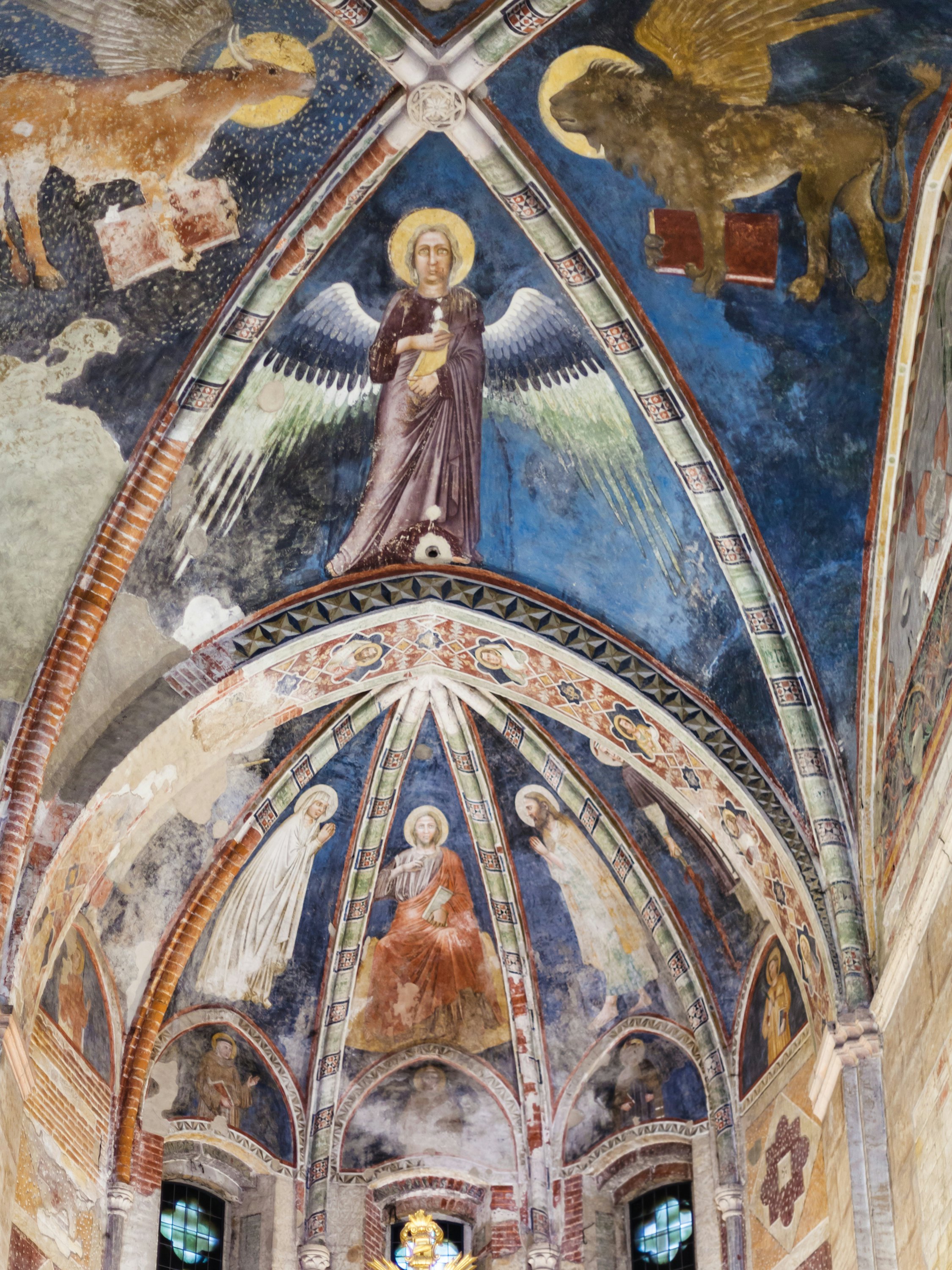
10. Admire Verona's incredible religious buildings
You can't visit Italy without seeing at least a few incredible churches. Begin with Verona’s 12th-century duomo (cathedral), a striking Romanesque creation, with bug-eyed statues of Charlemagne’s paladins Roland and Oliver crafted by medieval master Nicolò, on the west porch.
Nothing about this sober facade hints at the extravagant 16th- to 17th-century frescoed interior awaiting inside, with angels aloft amid trompe l’œil details. At the left end of the nave is the Cartolari-Nichesola Chapel, designed by Renaissance master Jacopo Sansovino and dominated by a vibrant Titian Assumption.
At the river end of Via Leoni, Chiesa di San Fermo Maggiore is actually two churches in one – Franciscan monks raised the 13th-century Gothic church right over an original 11th-century Romanesque structure. Inside the main Gothic church, you’ll notice a magnificent timber carena di nave, a ceiling reminiscent of an upturned boat’s hull. In the right transept are 14th-century frescoes, including fragments depicting episodes in the life of St Francis. Stairs from the cloister lead underground to the spare but atmospheric Romanesque church below.
Then there's Verona’s neoclassical synagogue, located in what was once the Jewish Quarter. It was designed by Giacomo Franco and Ettore Fagiuoli and completed in 1864. However, the interior is not open to the public.
11. Dine your way around Verona
Start your day with a coffee and a pastry. The gold standard for pastries in Verona is set by Flego, which has multiple locations around the city. Expect a variety of croissants, typical Veronese cakes, macarons and, come lunchtime, a range of savory pastry snacks (as well as excellent coffee).
For exquisite charcuterie and local cheeses, head to the storied 1920s-style bistro, Café Carducci, with its classic mirror-lined interior, and linen-topped tables with candles. Alternatively, you’ll find excellent food at easy-to-digest prices at tiny, historic Hostaria la Vecchia Fontanina; book ahead in person if possible.
Among the many back-alley osterie in Verona, Osteria da Ugo stands out for its wonderful courtyard, smart service, and Veronese specialties executed with creative flair. Meanwhile, the world-class, three-Michelin-starred Casa Perbellini 12 Apostoli delivers incredible tasting menus starting at €220 (US$250). This is one of those destination dining experiences you’ll want to book ahead of your trip.
12. Dive into local history at the Castelvecchio museum
Bristling with fishtail battlements along the river Adige, Castelvecchio was built in the 1350s by Cangrande II. Severely damaged by Napoleon and WWII bombing, the fortress was reinvented by architect Carlo Scarpa, who constructed bridges over exposed foundations, filled gaping holes with glass panels, and balanced a statue of Cangrande I above the courtyard on a concrete gangplank. The complex is now home to a diverse collection of statuary, frescoes, jewellery, medieval artefacts and paintings.
Scarpa's modern reworking of the interior comes as a surprise after the austere medieval exterior and provides a striking backdrop for the exhibits inside. Highlights include some wonderful 14th-century glass, the Pisanello room with its well-preserved frescoes, a collection of Flemish art, and works by top Renaissance Veronese and Venetian painters.
Look out for the Cangrande coat of arms throughout the building – Cangrande means “Top Dog,” and the family's comical shield features two dogs climbing a ladder!
Detour: After viewing the exhibition, clamber out onto the ramparts for views of the river and old city defences.
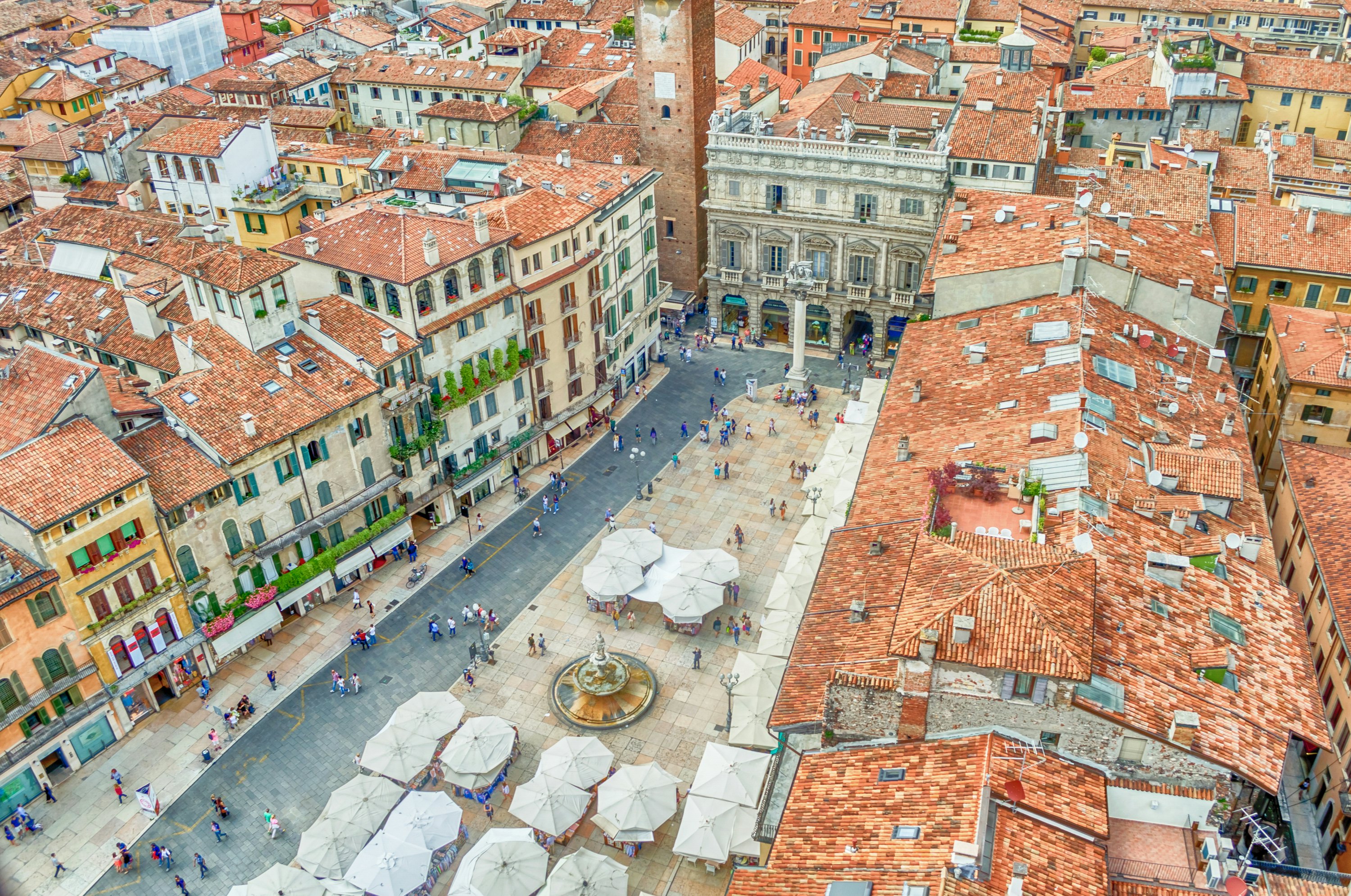
13. Soak up the vibe of the Piazza delle Erbe
Originally a Roman forum, Piazza delle Erbe is ringed with buzzing outdoor cafes. It's the perfect place to enjoy a coffee and some people-watching, and admire some of Verona’s most sumptuous buildings, including the elegantly baroque Palazzo Maffei, which houses several shops and a gallery.
Just off the piazza, the monumental arch known as the Arco della Costa is hung with a whale’s rib. Legend holds that the rib will fall on the first just person to walk beneath it. So far, it remains intact, despite visits by popes and kings. From Monday to Saturday, the square is home to a busy souvenir market.
Planning tip: Overlooking the northern end of vibrant Piazza delle Erbe, the Palazzo Maffei sees celebrated curator Gabriella Belli seamlessly juxtapose antiquities with modern art, with stunning results.
14. Get out on the river
The Adige is the second-longest river in Italy after the Po, running from the Reschen Pass in Austria to the Adriatic Sea. It is one of the defining features of Verona and the reason the Romans set up camp here. Rafting along it offers a surprising, new perspective on the city as you pass beneath a dozen bridges, and glide past the Castelvecchio to finish at the ruins of the Venetian customs house.
In summer, Adige Verona Rafting runs half-day and full-day trips that are very family-friendly. Or, closer to sunset, their convivial "Raft & Wine" tour includes pit stops for plates of prosciutto and prosecco.
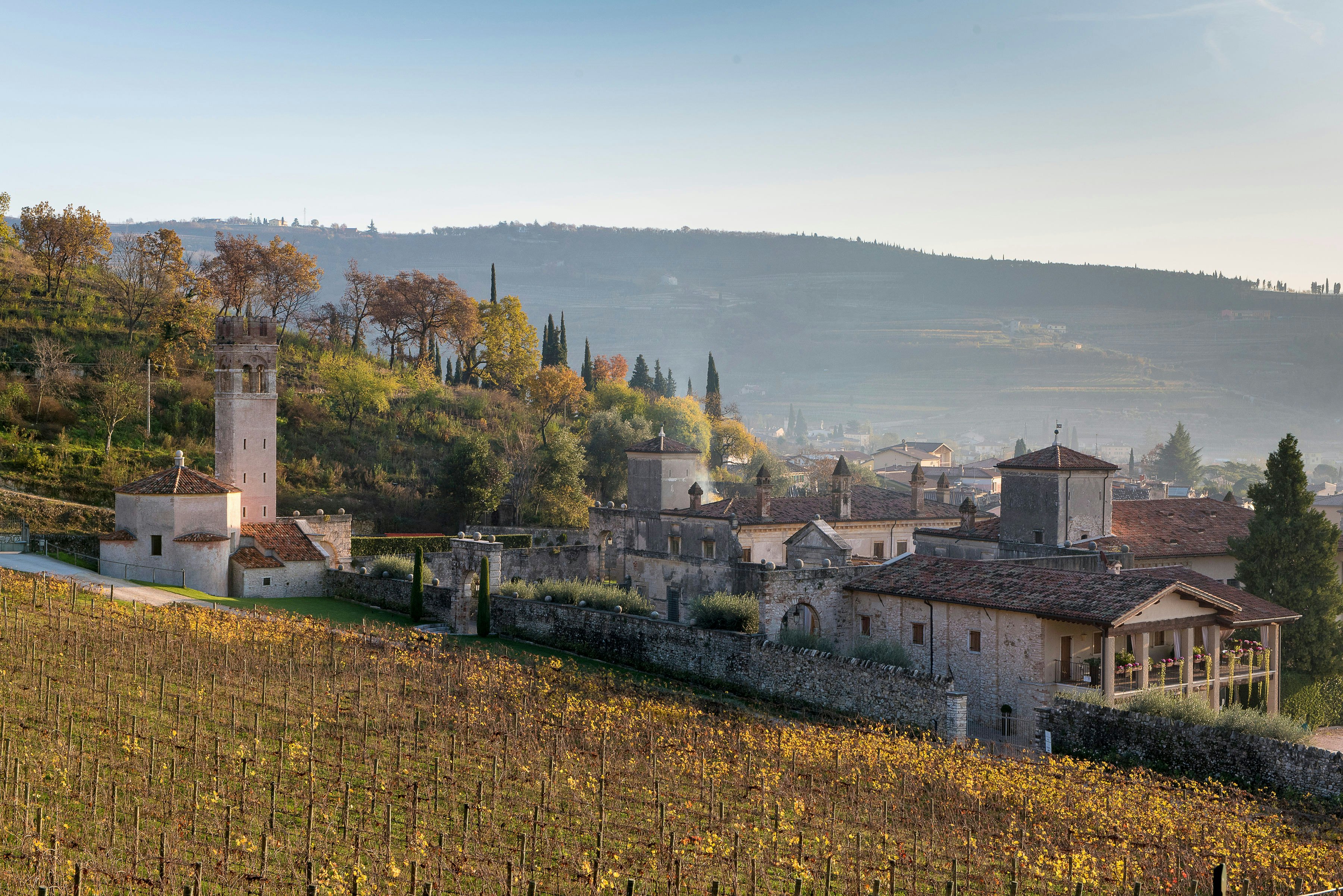
15. Tour the Valpolicella wine region
The vino flowing in Veneto's famed Valpolicella wine region predates the Roman Empire. Amarone is the most exquisite Valpolicella wine, but the lighter Valpolicella Classico Superiore and Superiore Ripasso (considered the poor man's Amarone) and sweet, full-bodied Recioto are all ridiculously good. Oenophiles shouldn't miss a peek at the ancient drying racks used in the appassimento process, where grapes are dried before fermentation.
The name “Amarone” was coined at lovely Tenuta Santa Maria di Gaetano Bertani, housed in the historic walled Villa Mosconi Bertani estate, with 22 hectares (54.4 acres) of English-style gardens, lakes, orchards and Guyot vineyards to explore.
Newly branded Maralisa Allegrini pours its Villa della Torre, San Polo and Poggio al Tesoro wines in the incredible 16th-century Villa della Torre in Fumane, and nearby Allegrini is home to the most coveted of the family's wines.
The architecturally daring Monteleone21 is the new focal point of Masi – here you'll find a modern tasting room, wine shop and restaurant; history pervades their winery Serego Alighieri, across the street. Pietro Alighieri, son of Italy’s great medieval poet Dante, acquired the grand Casal dei Ronchi villa in 1353, and 21 generations of descendants of the Supreme Poet have lived here since.
On the edge of Negrar di Valpolicella, family-run Damoli is distinctly more down-to-earth. Don't miss indulging at highly recommended Enoteca della Valpolicella, an ancient farmhouse and gastronomic focal point in Fumane.
Planning tip: Opening times at the region's wineries can vary, so always pre-book tours and tastings ahead.










